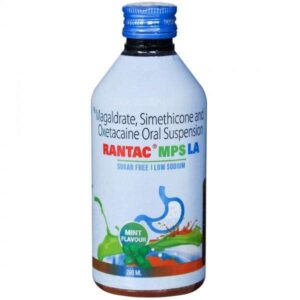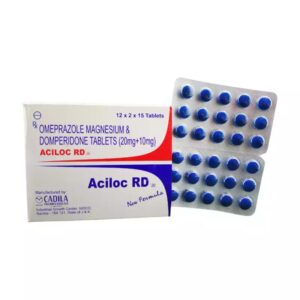RANITIDINE + DOMPERIDONE
Ranitidine: Ranitidine is a medication that belongs to a class of drugs known as H2 blockers. It is primarily used to reduce the amount of acid produced by the stomach and is commonly prescribed for the treatment of acid reflux, gastroesophageal reflux disease (GERD), and stomach ulcers.
The mechanism of action of Ranitidine involves blocking the H2 receptors found in the stomach lining. By doing so, it inhibits the production of gastric acid, thereby reducing the symptoms associated with excess stomach acid, such as heartburn, indigestion, and stomach pain.
The recommended dose of Ranitidine varies depending on the condition being treated. For acid reflux and stomach ulcers, the typical dose is 150 mg twice daily or 300 mg once before bedtime. However, the dosage may be adjusted by a healthcare professional based on individual needs.
Like any medication, Ranitidine may cause side effects. Common side effects include headache, dizziness, diarrhea, constipation, and nausea. These side effects are usually mild and temporary. In rare cases, more serious side effects may occur, such as an allergic reaction, liver problems, or low platelet count. It is important to seek medical attention if any severe or persistent side effects occur.
It is worth noting that, in recent years, concerns have been raised regarding the potential presence of a contaminant called N-nitrosodimethylamine (NDMA) in Ranitidine products. NDMA is classified as a probable human carcinogen, and its presence in Ranitidine led to a global recall of the drug. As a result, Ranitidine is no longer widely available on the market, and alternative medications are being prescribed for the same indications. It is essential to consult with a healthcare professional for the most up-to-date information on the availability and safety of Ranitidine.
Domperidone: Domperidone is a medication used to treat various gastrointestinal problems such as nausea, vomiting, bloating, and discomfort. It belongs to the class of drugs known as dopamine receptor antagonists.
The primary mechanism of action of domperidone is by blocking the dopamine receptors present in the upper digestive tract, particularly in the stomach. By doing so, it increases the motility of the stomach and intestines, thereby aiding in the passage of food through the digestive system. Additionally, it also acts on the area of the brain known as the chemoreceptor trigger zone, which helps in reducing nausea and vomiting.
Domperidone is mainly prescribed to relieve symptoms associated with gastric reflux, gastroparesis (delayed stomach emptying), and in some cases, to increase milk production in breastfeeding mothers.
The typical adult oral dose of domperidone is 10-20 mg, taken three to four times a day before meals and at bedtime. However, the exact dose and duration of treatment may vary depending on the condition being treated and individual patient response. It is important to follow the prescribed dosage instructions and not exceed the recommended dose.
While domperidone is generally well-tolerated, like any medication, it may cause certain side effects. The most commonly reported side effects include headache, dry mouth, dizziness, drowsiness, diarrhea, and abdominal cramps. In rare cases, it can cause hormonal disturbances, resulting in an increase in prolactin levels, which may lead to breast enlargement, production of breast milk, or menstrual irregularities.
It is worth noting that domperidone has been associated with a rare but serious side effect called cardiac arrhythmias (abnormal heart rhythm). This risk is higher in individuals with underlying heart conditions, those taking other medications that can prolong QT interval (a measure of the electrical activity of the heart), or in cases of overdosage. Therefore, it is important to use domperidone under medical supervision and to report any abnormal heartbeats or symptoms of cardiac issues promptly.
Domperidone is generally considered safe and effective when used appropriately, but it is essential to discuss any concerns or potential interactions with a healthcare professional before starting this medication.



